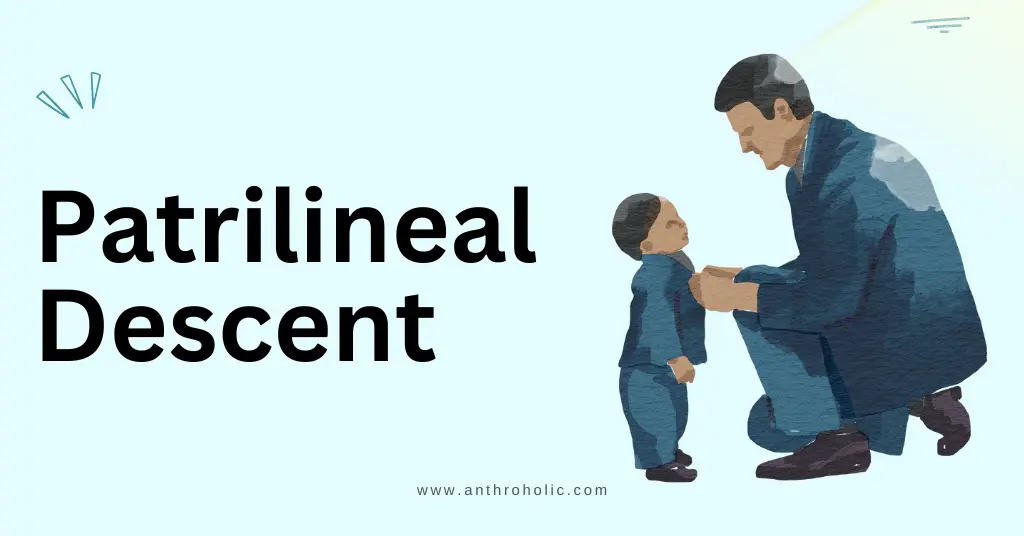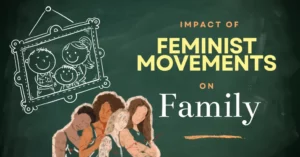AI Answer Evaluation Platform Live Now. Try Free Answer Evaluation Now
Patrilineal Descent
Patrilineal descent is a social organizational system predicated on the tracing of kinship through the male line. As one of the most dominant forms of descent systems globally, it has a wide-ranging influence on societal organization and culture.

Understanding Patrilineality
In a patrilineal society, children are identified with their father’s kin group or lineage. Rights, obligations, and property typically pass along the male line, from fathers to their sons, while daughters, upon marriage, transfer their alliance to their husband’s lineage. Such unilineal descent constructs critical social categories, providing mechanisms for defining identity, inheritance, and authority [1].
Prevalence and Global Distribution
Patrilineal descent systems are prevalent worldwide, representing approximately 44% of societies cataloged in Murdock’s Ethnographic Atlas [2]. These societies are especially common in East Asia, the Middle East, Europe, and parts of Africa. However, they are by no means uniform, differing in terms of kinship terminology, the scope of authority, and the specifics of inheritance.
The Societal Role of Patrilineal Descent
- Economic Implications: In many societies, patrilineal descent influences property inheritance, ensuring resources remain within a male-controlled lineage (Goody, 1976). For example, in medieval Europe, the concept of primogeniture—a specific form of patrilineal inheritance—enabled firstborn sons to inherit family wealth and estates, maintaining socioeconomic stability and reducing fragmentation of holdings.
- Social Structure: Patrilineal descent often shapes societal hierarchies and structures, cementing male dominance. It reinforces the patriarchal system, where men, as heads of families, control political power and social authority. However, it’s essential to remember that cultural nuances vary across different societies, leading to diverse manifestations of patrilineality.
Case Study
The Han Chinese
For instance, in the Han Chinese society, one of the world’s largest patrilineal cultures, familial obligations, property rights, and even religious practices are organized along patrilineal lines. Ancestors are venerated through the male line, and a family’s history is preserved in lineage books, marking the importance of the male lineage in socio-cultural aspects.
Bedouin Society
The Bedouin society of the Middle East exemplifies patrilineal descent, with male lineage determining tribal affiliation and social standing. Economic resources such as livestock are passed from father to son, and marriages often occur between close relatives to maintain wealth within the family.
The Maasai of East Africa
Among the Maasai, patrilineal descent dictates not only inheritance but also social and political roles. Boys undergo rites of passage to become Morans (warriors), gaining responsibility for the tribe’s protection. Wealth, in the form of cattle, passes from father to son, reinforcing male economic dominance.
Patrilineal Descent in India
In general Indian societies, patrilineality influences a range of socio-cultural practices. Children usually acquire their father’s surname, linking them to their paternal ancestry. This practice extends to religion and caste identity, which are typically passed down from the father. In terms of inheritance, the system traditionally favors sons. Agricultural land, property, and family businesses often pass down from fathers to sons. While the Indian Succession Act of 1925 does guarantee daughters’ rights to inherit, societal norms often favor sons in practice. The patrilineal system also impacts post-marital residence patterns. Typically, women move into their husband’s household—a practice known as patrilocality. This norm influences women’s social dynamics as they integrate into a new family system.
Variations in Patrilineality
Patrilineality is far from a monolithic concept. The specifics of descent, residence, and inheritance may vary considerably based on local customs and social realities. For instance, among the Bedouin tribes of the Middle East, where patrilineality is interspersed with strong maternal kin bonds, we witness a fascinating interaction between patrilineal descent and matrilateral cross-cousin marriage, blurring the strict boundaries of descent.
Changing Patrilineal Systems in Modern Times
In the contemporary era, traditional patrilineal systems are under transformation due to changing socio-economic and political contexts. Increased urbanization, women’s rights, and legal changes are challenging the rigidity of the patrilineal descent. For instance, in Japan, the revision of the Civil Code in 2015 now allows married couples to choose separate surnames, disrupting traditional patrilineal surname customs.
Conclusion
Understanding patrilineal descent is crucial for anthropologists to explore societal structure, kinship systems, and cultural heritage. Despite its commonality, patrilineality’s rich variety necessitates localized and culturally sensitive studies.
Suggested Articles
| What is Descent? | Principles & Types | Bilateral Descent |
| Matrilineal Descent | Double Descent | Ambilineal Descent |
| Descent Groups | Descent and Alliance | Unilineal Descent |
References
[1] Radcliffe-Brown, A. R. (1952). Structure and Function in Primitive Society. Cohen & West. https://archive.org/details/structurefunctio00radc
[2] Murdock, G. P. (1967). Ethnographic Atlas. University of Pittsburgh Press.




